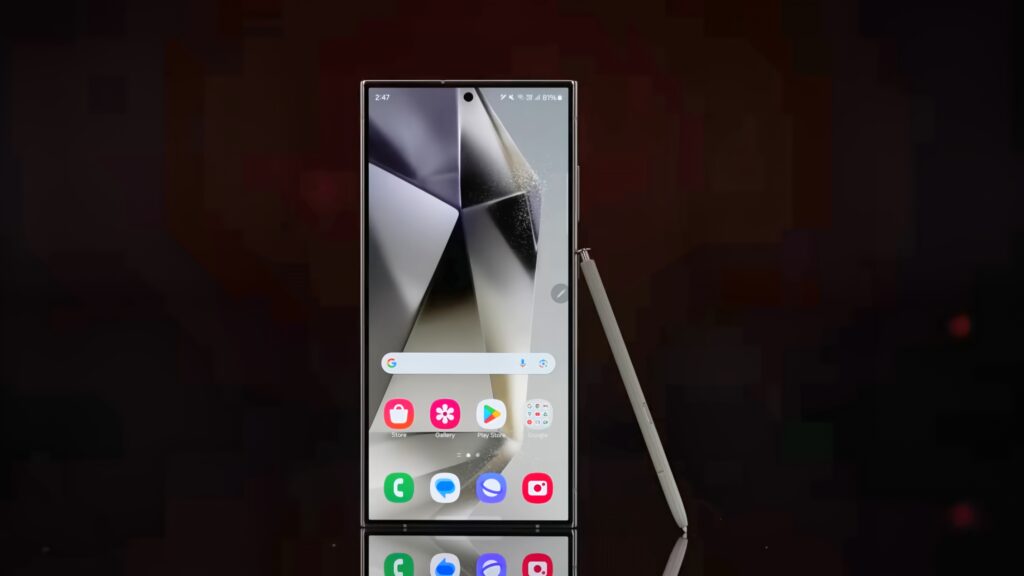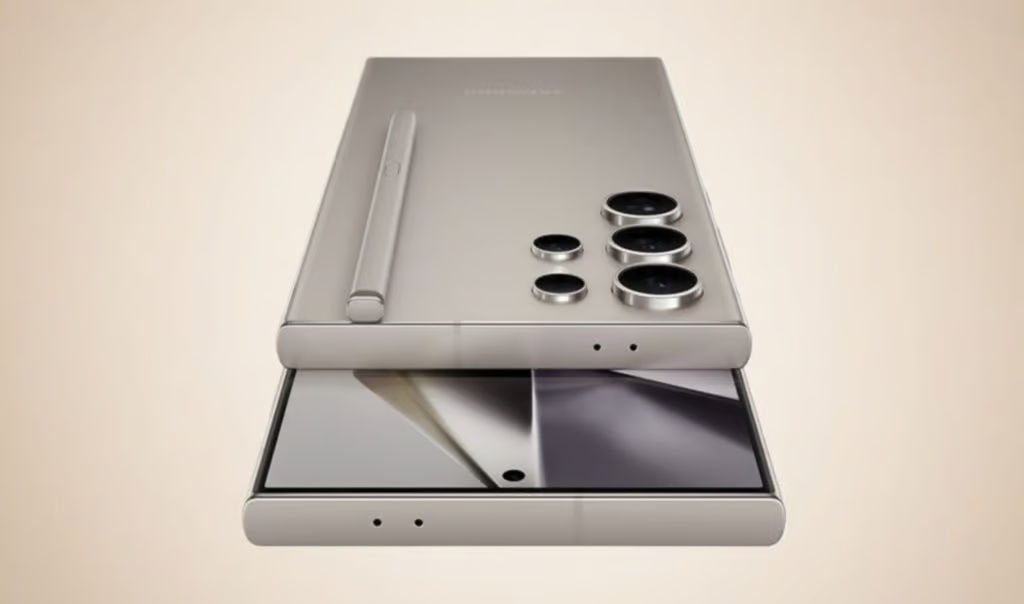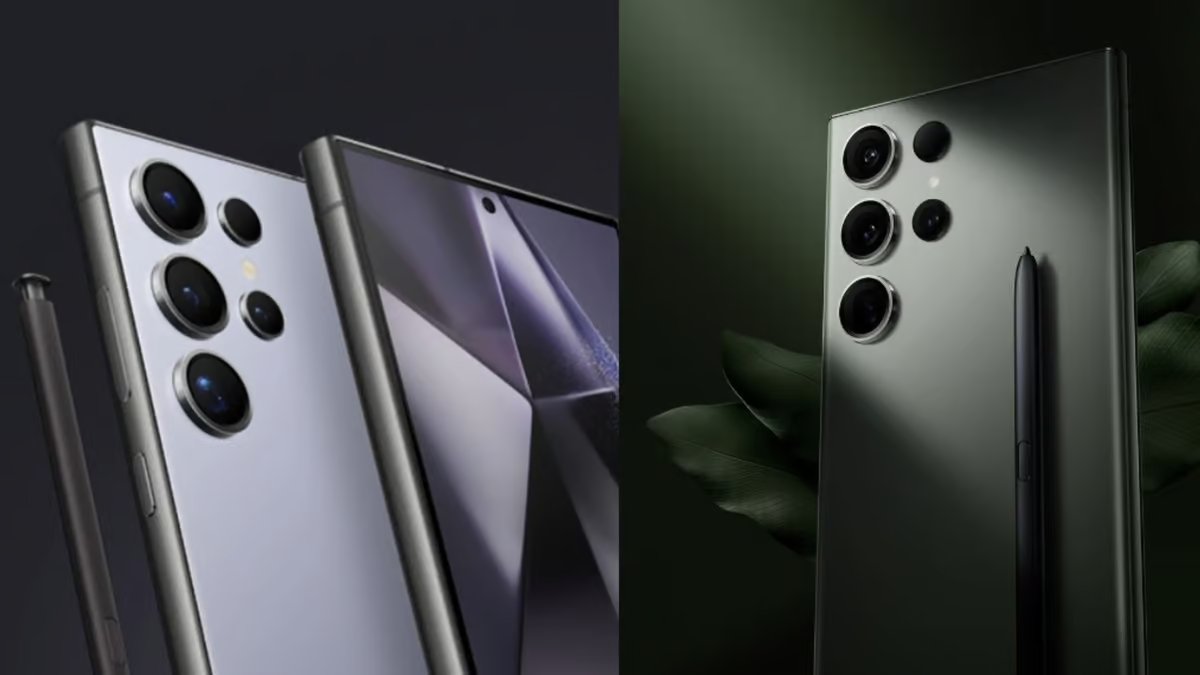Android flagship smartphones don’t lack for options when it comes to selecting their flagships, with plenty of quality performance devices offering top-tier performance with vibrant, visually attractive screens that draw your eye, sleek designs that evoke DSLR quality imaging cameras – with Samsung’s Galaxy S series fulfilling most criteria and its newly announced Galaxy S24 Ultra living up to all these expectations.
With AI being at the heart of Samsung Unpacked this year, AI-focused Galaxy S24 Ultra phones have seen significant advances in how we interact with them. Many predict it could become one of the best-looking and feature-filled Android phones available by 2024; yet is that enough to convince existing S23 Ultra owners to upgrade? You can do blogging with this phone.
Galaxy S24 Ultra vs. S23 Ultra: specs
| Specs | Samsung Galaxy S24 Ultra | Samsung Galaxy S23 Ultra |
|---|---|---|
| Size | 162.5 × 79 × 8.6mm (6.40 x 3.11 x 0.34 inches) | 163.4 × 78.1 × 8.9mm (6.43 x 3.07 x 0.35 inches) |
| Weight | 233 grams (8.22 ounces) | 234 grams (8.25 ounces) |
| Screen | 6.8 inches LTPO OLED, Quad HD+ 1-120Hz dynamic refresh rate HDR10+ 2,600 nits peak brightness Flat edges Corning Gorilla Glass Armor protection | 6.8 inches LTPO OLED, Quad HD+ 1-120Hz dynamic refresh rate HDR10+ 1,750 nits peak brightness Curved edges Corning Gorilla Glass Victus 2 protection |
| Operating system | One UI 6.1 based on Android 14 | Upgradable to One UI 6.1 based on Android 14 |
| RAM & Storage | 12GB + 256GB UFS 4.012GB + 512GB12GB + 1TB | 8GB + 256GB UFS 4.012GB + 256GB12GB + 512GB12GB + 1TB |
| Processor | Qualcomm Snapdragon 8 Gen 3 “For Galaxy” | Qualcomm Snapdragon 8 Gen 2 “For Galaxy” |
| Camera | Quad rear cameras:200MP primary, f/1.7, 85° FOV, OIS12MP ultrawide, f/2.2, 120° FOV10MP portrait telephoto, 3x optical zoom, f/2.450MP periscope telephoto, 5x optical zoom, f/3.412MP selfie camera, f/2.2, 80° FOV | Quad rear cameras:200MP primary, f/1.7, OIS12MP ultrawide, f/2.2, 120° FOV10MP portrait telephoto, 3x optical zoom, f/2.410MP periscope telephoto, 10x optical zoom, f/4.912MP selfie camera, f/2.2, 80° FOV |
| Video | Rear: Up to 8K@24fps, 4K@60fps, or 1080p@240fpsFront: Up to 4K@60fps | Rear: Up to 8K@24fps, 4K@60fps, or 1080p@240fpsFront: Up to 4K@60fps |
| Connectivity | Bluetooth 5.35GWi-Fi 7, dual-bandUWB | Bluetooth 5.35GWi-Fi 6E, dual-bandUWB |
| Ports | USB-C | USB-C |
| Water resistance | IP68 | IP68 |
| Battery & charging | 5,000mAh with 45W wired fast charging and 15W wireless charging | 5,000mAh with 45W wired fast charging and 15W wireless charging |
| Colors | Black, Gray, Violet, Yellow | Black, Green, Cream, Graphite, Sky Blue, Lime, Red |
| Price | Starting at $1,300 | Starting at $1,200 |
Galaxy S24 Ultra vs. S23 Ultra: display

The Galaxy S24 Ultra features a brand-new display. Beyond physical modifications to its chassis and screen resolution improvements, its display brightness peak reached 2600nits compared to 1750 nits for Samsung’s S23 Ultra smartphone. Note that “peak brightness” refers only to brightness that exceeds each lighting pixel’s peak intensity – something typically used when watching HDR content.
At Samsung’s discretion, brightness modes such as typical or High Brightness Mode (HBM) provide information regarding overall screen brightness levels; HBM indicates when brightness can be activated manually by hand or exposed to intense ambient lighting conditions like in sunlight. We expect more information in regards to different brightness modes as we conduct reviews of Galaxy S24 Ultra and compare it against its predecessor models over the coming days and weeks.
Outwardly, not much differentiates it from previous models beyond brightness and appearance – this is due to not needing repairs on anything that was broken beforehand. Samsung pioneered displays, providing screens to many phones (such as iPhone and OnePlus flagship models ). Their display prowess can clearly be seen here too.
“Dynamic AMOLED 2X” is the official marketing term that refers to an LTPO display with variable refresh rate capabilities of between 1Hz to 120Hz that sync up perfectly with frames rate content for seamless performance without the possibility of tears or glitches.
The display features Quad HD+ resolution and can show all DCI-P3 colors at 100% saturation. Like its predecessors, Galaxy S24 Ultra supports HDR10+ codec but lacks Dolby Vision support; with brighter screens that support Dolby Vision compatibility our concerns regarding last generation’s inability to compete could be eased somewhat by higher brightness levels on display and increased contrast levels.
Galaxy S24 Ultra vs. S23 Ultra: performance
The Galaxy S24 Ultra stands apart from its S23 Ultra counterpart primarily by virtue of the hardware which powers it. Samsung’s S24 Ultra uses Qualcomm Snapdragon 8 Gen 3 chipset which was first made available worldwide during October 2023 – this being its debut date!
Qualcomm recently altered the CPU cores on their Snapdragon 8 Gen 3, prioritizing performance over size, leading to a reported 30% performance increase over Snapdragon 8 Gen 2. Qualcomm further claims a 25% boost in graphics speed that should lead to enhanced gaming experiences; Additionally, Samsung is working with game studios such as Diablo Immortal Racing Master Arena Breakout Night Crows so as to popularise Ray Tracing technology on Android games more broadly – initial applications which support Ray Tracing include Diablo Immortal Racing Master Racemaster Arena Breakout Night Crows
The Galaxy S24 Ultra has several enhancements designed to boost performance, such as its 90% larger vapor cooling chamber than that on its predecessor the S23 Ultra and 12GB RAM that comes standard on every storage capacity model from 256GB up to 1TB.
Snapdragon 8 Gen 3 offers both increased computing power and increased processing capability, along with an incredible 98% boost to neural processing power compared to prior generations of Snapdragon. Artificial Intelligence tasks are now capable of running on devices themselves without cloud data centers – as demonstrated by Qualcomm. Following ChatGPT and Bard’s popularity last year as mainstream products for AI research and language modeling capabilities respectively; Samsung has joined this wave by including these capabilities on their Galaxy S24 series devices.
AI features
Samsung Galaxy S23 Ultra was relatively lacking when it comes to Artificial Intelligence features; however, S24 Ultra makes up for that in spades with AI features like Circle to Search: users can long-press the Home screen then highlight or circle any item inside an application in order to use Google search to quickly locate it without ever leaving that particular app or having to force quit and search again later on.
Live Translate, Transcript Assist and Chat Assist are included to facilitate real-time, two-way multilingual communication in real time. Furthermore, Samsung’s camera department includes AI features reminiscent of those found on Google Pixel cameras such as Generative Edit that enable professional edits without professional editors being needed – these new capabilities make editing simpler than ever!
Galaxy S24 Ultra vs. S23 Ultra: cameras
Samsung Galaxy S23 Ultra was one of the year’s premier camera phones; and its successor – Galaxy S24 Ultra with its 200MP sensor – appears poised to follow suit this year.
While Samsung didn’t give many details in their presentation, they have claimed the new ISOCELL HP2 sensor in their Galaxy S24 Ultra will provide 60% more light for nighttime photography and improve nighttime photos overall. Furthermore, OIS (Optical Image Stabilization) was improved to reduce any lags or jitters caused by shaking.

An impressive feature of Samsung’s camera upgrade is the inclusion of a 5x periscopic telephoto sensor, seemingly less impressive when compared with Samsung’s Galaxy S23 Ultra’s 10x periscopic, but Samsung uses AI to smooth transitions between 2x and 10x zoom levels without losing quality when zooming. Instead of simply zooming, however, instead it crops a portion of each photo it takes instead, providing images with optical-like quality zoom images at up to 100x magnification periscope can shoot pictures using up to 100x zoom; likely using AI to recreate blurry areas just like moon photos do so it also shoots images at 100x magnification levels with stunning “crystal clearness.”
Samsung relies heavily on Snapdragon 8Gen 3’s AI capabilities in order to optimize camera performance, using sensors with 12MP ultrawide coverage and 10MP telephoto zoom of three times zoom for its ultrawide 12MP sensor and 10MP Telephoto that has three times zoom respectively.
Galaxy S24 series takes advantage of Snapdragon 8 Gen 3’s on-device AI processing capabilities to improve images captured with “ProVisual Engine,” including sharpening photos or shortening shutter delay time. AI also suggests editing suggestions, while providing “Generative Edit”, similar to Google Pixel 8 series smartphones.
Samsung cameras have often been accused of producing photos with excessive HDR in low light situations. As a response, it introduced Super HDR; an option which allows you to see images using HDR through the viewfinder before processing takes place, giving users more control of HDR use when needed and potentially disabling HDR when necessary. Furthermore, third-party applications like Instagram will soon support taking or creating videos using HDR – similar to Pixel 8 where HDR metadata won’t be saved with each individual photo and won’t present differently when viewing images or creating videos using HDR support on devices with or without support for HDR support.
Since most improvements to camera tech rely on improved hardware – be it chips or sensors -, we may never see these advancements filter down onto older smartphones such as the Galaxy S23 Ultra.
Galaxy S24 Ultra vs. S23 Ultra: verdict
Samsung Galaxy S24 Ultra Samsung Galaxy S24 Ultra is clearly an upgrade from that of the S23 Ultra, with better performance, a more impressive display, and a better camera. What makes the decision to go with Samsung’s Galaxy S24 Ultra a no-brainer over the S23 Ultra is the prolonged support for software that Samsung provides for the older. Seven years worth of Android version and security updates The Galaxy S24 Ultra will receive continuous software support up to Android 21 despite the fact that the hardware, specifically the processor, might not be able to withstand the rigors of technological advancements over the next generation.
The only reason it is possible that the Galaxy S23 Ultra still makes more sense than the Galaxy S24 Ultra is if Samsung can lower the price dramatically and give it better value for money or if you can get an attractive deal from the small-scale seller you have a relationship with for the primary reason. In the absence of that, you’ll miss out on immediate access to the latest AI features, and the possibility of improved usage over the next few years.
However, if you have the Galaxy S23 Ultra, you are probably not required to change to S24 Ultra. There’s a reason for that. S24 Ultra is technically better, but it’s not as good. S23 Ultra is still an excellent Android phone and it’ll get the majority (if there’s a chance of every one) features of Galaxy AI capabilities that are available on the S24 Ultra.

1 thought on “Samsung Galaxy S24 Ultra vs. S23 Ultra: Do you need to upgrade?”